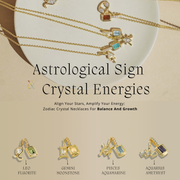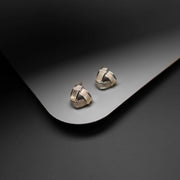What Is Zircon? Beyond the Diamond Imitator
Zircon (zirconium silicate, ZrSiO₄) is a resilient nesosilicate mineral that forms in igneous, metamorphic, and sedimentary rocks. Despite often being confused with synthetic cubic zirconia (ZrO₂), natural zircon is a primary source of zirconium metal and one of Earth’s oldest known minerals. Its exceptional durability allows it to survive billions of years of geological upheaval, making it a vital tool for understanding Earth’s early history.
Key Properties
-
Hardness: 7.5 on the Mohs scale (harder than quartz but softer than topaz)
-
Density: 4.6–4.7 g/cm³—one of the heaviest gem minerals.
-
Optical Traits: High refractive index (1.92–2.01) and strong dispersion, creating diamond-like "fire".
-
Colors: Red, brown, yellow, green, blue, and colorless. Heat treatment can enhance blue hues.

A Time Capsule from Earth’s Cradle
Zircon crystals from Western Australia’s Jack Hills hold the record as Earth’s oldest known material—4.4 billion years old. These grains reveal that Earth’s crust formed just 160 million years after the solar system’s birth.
How Zircon Dating Works:
-
Uranium Incorporation: Zircon crystals trap uranium atoms during formation but exclude lead.
-
Radioactive Decay: Over time, uranium decays to lead at a fixed rate.
-
Age Calculation: Scientists measure the uranium-to-lead ratio to determine crystallization dates within 0.1% accuracy.
"Zircon is geology’s Rosetta Stone—translating atomic decay into planetary history."

Zircon vs. Cubic Zirconia: The Critical Difference
| Characteristic | Natural Zircon | Cubic Zirconia (CZ) |
|---|---|---|
| Composition | ZrSiO₄ | Synthetic ZrO₂ stabilized with Y₂O₃ |
| Origin | Mined from ancient rocks | Lab-created |
| Dispersion ("Fire") | High (0.039) | Very high (0.060) |
| Density | 4.6–4.7 g/cm³ | 5.5–6.0 g/cm³ |
| Birefringence | Strong (double refraction visible) | None |
Note: Blue zircon was fashionable in Victorian-era "estate jewelry" but declined when CZ flooded the market as a diamond simulant.
Industrial Powerhouse: Beyond Gemology
Zircon’s resistance to heat (melting point: 2,550°C) and corrosion makes it indispensable for:
1. High-Tech Applications
-
Nuclear Reactors: Zirconium metal cladding encases uranium fuel rods due to its low neutron absorption.
-
Space Shuttle Tiles: Zirconia (ZrO₂) thermal coatings protect against re-entry temperatures.
-
Solid Oxide Fuel Cells: Zirconia electrolytes enable clean energy conversion.
2. Consumer & Industrial Goods
-
Ceramics: 54% of mined zircon is used in ceramics for tiles, sanitaryware, and opacifiers.
-
Abrasives: Crushed zircon sands polish metals and glass.
-
Cosmetics: Zirconium compounds in antiperspirants control sweat.

Global Sources & Mining
Australia dominates zircon production, supplying 37% of global output from mineral sand deposits:
-
Rich Coastal Sands: Heavy minerals like zircon concentrate in ancient shorelines (e.g., Murray Basin, Eucla Basin).
-
Extraction Process: Dredges separate zircon from quartz using gravity spirals, followed by magnetic/electric sorting.
Gem-Quality Sources:
-
Blue Zircon: Cambodia’s Ratanakiri (heated brown stones to 900°C).
-
Golden & Red Zircon: Sri Lanka’s alluvial gravels.
-
Green Zircon: Nigeria’s basalt-hosted deposits.
Zircon in Jewelry: Care and Myths
Wearability Tips
-
Avoid Ultrasonics: Zircon can fracture if inclusion-rich. Clean with mild soap/water.
-
Protect from Impact: Its brittleness requires secure settings in rings.
-
Color Stability: Some blue stones fade in sunlight; store in dark when not worn.
Cultural Legends
-
Hindu texts describe green zircon as "heavenly leaves" gifted to Buddha.
-
Medieval Europeans believed zircon cured insomnia and warded off evil.
Why Zircon Matters: Science’s Eternal Witness
From revealing Earth’s fiery infancy to enabling nuclear energy, zircon bridges deep time and human ingenuity. As the oldest mineral on Earth, it reminds us that crystals can outlive mountains, oceans, and stars—a testament to nature’s endurance.
FAQs
Q: Is zircon radioactive?
A: Most gem zircons are safe. Trace uranium/thorium occur in ancient grains (e.g., Jack Hills), but radiation levels are negligible for wear.
Q: Why is zircon used in radiometric dating?
A: Its crystal structure locks in uranium while excluding lead during formation, creating a precise "atomic clock".
Q: Can zircon be lab-created?
A: Synthetic zircon exists but is rare; most lab creations are cubic zirconia (ZrO₂), not zircon silicate.







